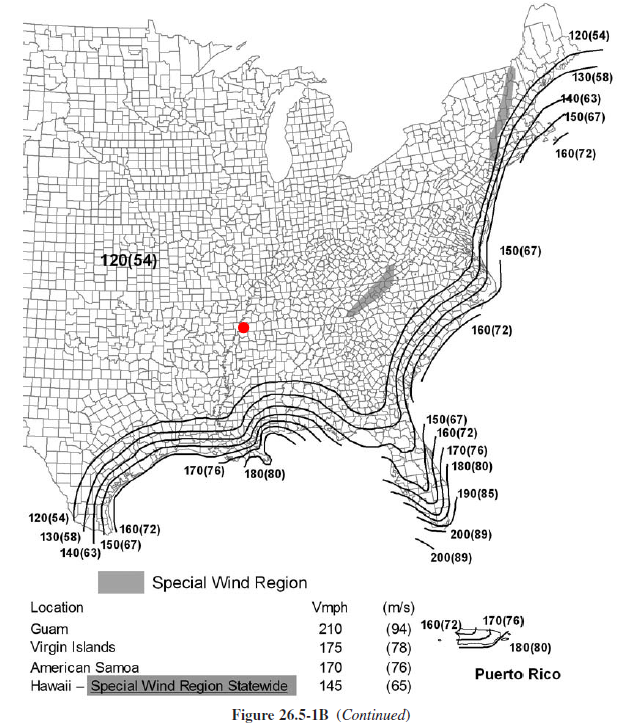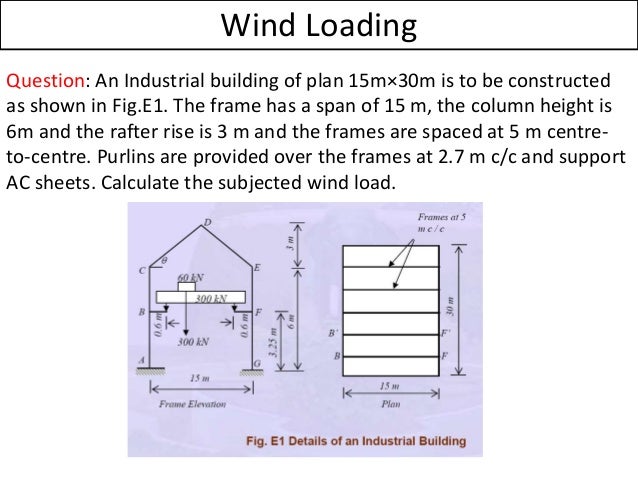Basic Wind Design Speed Building Code
A The Effective Ultimate Design Wind Speed 8 Ø Ù Ù. Miami-Dade County Risk Category I Buildings and Structures.

Asce 7 10 Wind Load Calculation Example Skyciv Engineering
The Code of Practice on Wind Effects in Hong Kong 2019 Code stipulates the approach for calculating the wind loads for the structural design of buildings or parts of buildings referred hereinafter as Standard Method.

Basic wind design speed building code. Adopted Codes Current adopted codes are as follows. JUMP TO FULL CODE CHAPTER. The design wind speeds in the HVHZ are as follows.
Because of the higher return period the mapped design wind speed will be much higher than when using previous maps. The wind provisions of this code shall not apply to the design of buildings where wind design is required in accordance with Figure R30124B or where the basic wind speed from Figure R30124A equals or exceeds 110 miles per hour 49 ms. Frost Depth 12 inches.
Compliance with the requirements of this Code is. The wind speed shown in these figures include topographic effects and are based on the basic wind speed definition used for structural design of buildings in the 2012 IBC ASCE 7-10 and the State Building Code. When viewing the wind maps take the highest category number of the defined Risk or Occupancy category.
Risk Category II buildings use a basic wind speed map based on a 700-year return period. Local codes and ammendments may governverify with local building department or jurisdiction. IRC - 110 mph 3-second gust IBC - Risk Category I.
To determine the basic windspeed fill in the address below. And Risk Category I buildings use a basic wind speed map based on a 300-year return period. Negligible IRC Roof Design Load.
I suspect that this is less of a concern when an engineer performs the structural plan check. The basic design wind speed V for use in the design of Risk Category I buildings and structures shall be obtained from Figures 160934 and 160938. 165 mph Risk Category II Buildings and Structures.
The Occupancy Category is defined and classified in the International Building Code. Values interpolated to the nearest 1-mph in high wind areas. 32 Basic wind speed for bridges Referred to Wind-Resistant Design Specification for Highway Bridges JTGTXX-20042 the definition of basic wind speed vo is the 10-minute average wind speed.
Buildings and other structures that represent a low hazard to human life in the event of failure including but not limited to. These are peak gust velocities that are equal to the 3-second gust in ASCE 7 standard in my opinion. Screen enclosures Risk Category II Buildings and other structures except those listed in Occupancy Categories I III and IV Risk Category III.
2015 International Energy Conservation Code. R301211 Wind limitations and wind design required. 185 mph Broward County Risk Category I Buildings and Structures.
The ASCE 7-10 provides a wind map where the corresponding basic wind speed of a location can be obtained from Figures 265-1A to 1C. The basic design wind speed V for the special wind regions indicated near mountainous terrain and near gorges. Design Standards Current design standards are as follows.
Certain temporary facilities Minor storage facilities. 175 mph Risk Category III and IV Buildings Structures. 2012 International Residential Code.
Design Wind speed by Zip Code WindSpeedByZip is a tool for Architects Engineers and Builders to easily determine the 3-second gust basic windspeed Figure 6-1 of ASCE 7-05 and now Design Wind Speed per ASCE 7-10 maps for any location in the continental United States. Values are nominal design 3-second gust wind speeds in mph at 33ft above ground for Exposure C category. P z 047 C p V D 2 p z in Pascals Pa or p z 0048 C p V D 2 p z in kgm 2 The Pressure Coefficient C D is defined by the Code.
Wind speeds derived from ASCE 7-05 ASCE 7-10 and ASCE 7-16. These values can be modified to. V shall not exceed 130 miles per hour 57 ms 3-second gust.
V ult 130 mph. Building Code 2018 of Illinois 23 Wood 2308 Conventional Light-Frame Construction 23082 Limitations 230824 Basic Wind Speed. Building Design Wind Speeds.
While the IBC may use V to denote the wind speed the fact that Vasd V077 infers that V is a factored or ultimate speedthus suggesting that instead referring to V as Vult is understandable. The 2012 IRC provides a basic wind speed map Figure R30124A which shows the nominal design 3-second gust wind speeds in miles per hour at 33 feet above ground for Exposure C category This basic wind design speed value should also be listed in Table R30121 which gives the climatic and geographic design criteria provided by each jurisdiction. Wind speed is used for the HVHZ for each Risk Category Map.
The design pressure p z produced by the wind flow on the structure is a function of the Design Wind Speed V D and a Pressure Coefficient C D as follows. Based on Load Code for the Design of Building Structures GB50009-20011 the basic wind speed vo is defined as the 10-minute average wind speed over a flat and open terrain at an eleva-tion of 10m with a mean return period of 50 years. I would compute the pressures using the ASCE 7-02 I hope this helps.
STRUCTURAL REQUIREMENTS Basic Wind Speed. è ß ç shall be obtained from Figures R30128a through R30128f. 230824 Basic Wind Speed.
120 mph Ultimate Wind Speed for Risk Category II Exposure B. I do not use BS codes however the MIL-HBK-10022A requires a wind speed of 81 MPH miles per hour or 36 meters per second for bases in Bahrain and Saudi Arabia. For ground snow load and basic wind speeds for R-3 one-.
Building Code 2018 of Illinois 16 Structural Design 1609 Wind Loads 16093 Basic Design Wind Speed 160931 Wind Speed Conversion JUMP TO FULL CODE CHAPTER Where required the basic design wind speeds of Figures 16093 1 through 16093 8 shall be converted to allowable stress design wind speeds V asd using Table 160931 or Equation 16-33. Risk Category III and IV buildings use a basic wind speed map based on a 1700-year return period. Basic wind speed three second gust speed V and earthquake response accelerations for the maximum considered earthquake S S and S 1 for each city and town in Massachusetts shall be as given in Table 160411.
Risk Category III IV. Geotechnical Report is required to determine soil conditions.

Florida Building Code 2017 Wind Loads Article Meca Enterprises Inc

Structure Magazine Asce 7 16 Wind Load Provisions

Wind Power Activity Kids Science Fair Projects Science For Kids Science Projects

Structure Magazine Asce 7 16 Wind Load Provisions
Ultimate Design Wind Speed Upcodes

How To Build Your Own Anemometer Using Reed Switches Hall Effect Sensor And Some Scraps On Nodemcu Part 1 Hardware Anemometer Electronics Projects Hall Effect

Time To Build Understanding Building Codes Zoning And Design Review Building Code House Plans State Of Florida

Structure Magazine Asce 7 16 Wind Load Provisions

Wind Vane For Arduino Or Pi Weather Station By Micromet Thingiverse Weather Station Wind Vane Weather

2018 International Building Code Ibc Chapter 16

Pin On Indoor Swimming Pool Design

Wind Sustainability Workshop Wind Speed And Direction Natural Ventilation Wind Rose

Wind Loading Spreadsheet Based On Asce 7 16 In 2021 Spreadsheet Wind Analysis Wind

64 Ladybug And Grasshopper Wind Rose Analysis Tool Youtube Wind Rose Environmental Analysis Environmental Design

Structure Magazine Asce 7 16 Wind Load Provisions

Understanding The Energy Standards Required By California S Title 24 S3da Design Structural Mep Design Energy Understanding Title 24
Ultimate Design Wind Speed Upcodes



Komentar
Posting Komentar